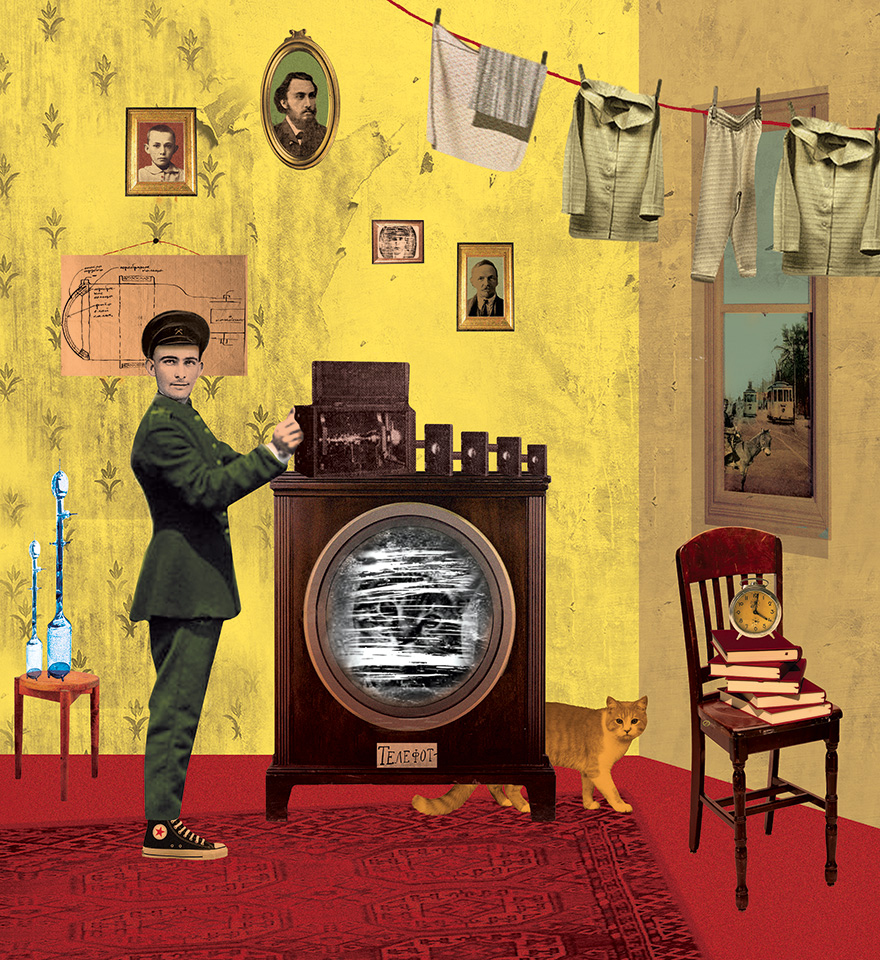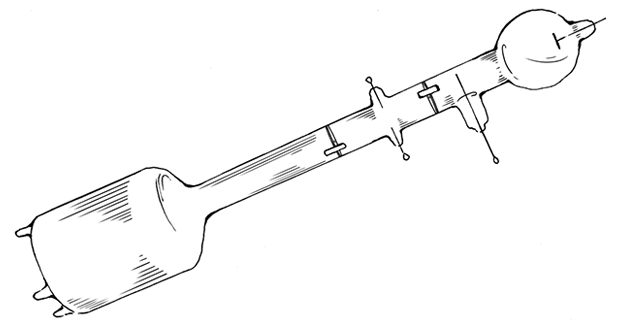GrabovskyBoris
June 8, 1901, Tobolsk, Russian Empire (now Russia) —
January 13, 1966, Frunze, USSR (now Bishkek, Kyrgyzstan)
Telefot
At the beginning of the XX century, television was called “farvision”. We still say so, because “tele” comes from the Greek word that means “far off”.

The first televisions released in the 1920s were electromechanical. And it was the mechanical principle of transmission of images that made the picture on the screen so fuzzy. In addition, the first screens were about 3×3 centimeters in size. Watch a movie or talk show in the evening with the whole family? It could be hardly possible.
So, dozens of physicists, amateur radio operators, and self-taught inventors from Japan, the United Kingdom, Germany, the United States, and the USSR were racing to find new ways to transmit the images.
Boris Grabovsky was one of them. His last name might sound familiar — the engineer’s father was the famous poet Pavlo Grabovsky.
Fate brought a twenty-year-old boy to Tashkent, where he entered the Preparatory department of the University of Central Asia. He did not have any money, so he immediately got a job as a laboratory assistant at the seismic station of the Tashkent Physical and Astronomical Laboratory. Once Grabovsky got a brochure by Boris Rosing, a physicist who in 1911 developed another method of image transmission — a semi-electronic one. The receiver was electronic, and the transmitter was mechanical. However, Rosing managed to transmit only a still image with this method. But even this was enough for Grabovsky to start creating his ideas.
In 1923, he demonstrated a cathode-ray tube of his design, which later became one of the elements of the system of transmission and reception of video signals.
But at that point, Grabovsky lacked knowledge because he never got an education as an engineer or physicist. While visiting his aunt in Saratov, the young man hired a tutor in mathematics and physics Nikolai Piskunov, with whom he shared ideas, and also met an amateur radio operator Viktor Popov. And the three of them started working on the invention together. They decided to call the future device a telefot.The name derives from Greek (tele) “far off” and (phōs), “light”.
And on November 9, 1925, they filed a joint patent application. It was Boris Rosing who inspired them to do this and gave inventors the consultation. Grabovsky later recalled that when Rosing saw the drawings, he said:
“My dear fellows, you have no idea what you invented. I only invented the receiver, and I had a mechanical transmitter, and you invented the electronic transmitter. I will try to help you so that you can conduct experiments. And hurry up with a patent for your invention.”

Cathode-ray tube invented by Boris Rosing
Indeed, soon the Petrograd electric vacuum plant agreed to manufacture the necessary parts, but they failed to complete the task properly. The final construction could not transmit the image. His colleagues lost interest in the telefot, and Grabovsky returned to Tashkent. However, he was not going to give up.
Two more years passed, and Grabovsky found the budget to place a new order at the same plant. And that time, Rosing personally monitored the manufacturing process. And Grabovsky’s new partner, Ivan Bilianskyi has taken responsibility for delivering parts from Leningrad to Tashkent.
At the beginning of 1928, the first transmission of a moving image at a distance of seven meters, from one room to another, was conducted in the Grabovsky House. Lydia, the wife of the inventor, helped conduct the experiment. They transmitted an image of her moving scissors in her hand.
The first public demonstration for scientists took place on July 26 of the same year. On the screen of the receiving tube, with a diameter of twelve centimeters, you could see Grabovsky’s colleague, Bilianskyi, who was taking off and putting on his cap. The image was still fuzzy when compared to modern TVs, but significantly better than on electromechanical TVs. On August 8, another demonstration was held, this time for the general public. That time the telefot was installed on the street, and pedestrians and trams moving along the city square were appearing on the screen.
A special international commission established at the initiative of UNESCO acknowledged the fact that Boris Grabovsky and Ivan Bilianskyi carried out the world’s first television transmission using electronic television devices in 1928.
No matter how thin modern TVs are, we still call them ящик (eng. box) from time to time, and Americans call them “tube” remembering the first television sets with cathode-ray tubes.
Grabovsky was offered to demonstrate the telefot in Moscow. He sent the device by rail in the luggage compartment, but on the way, it crashed. The telefot has been declared an unpromising device without giving the inventor a chance to repair it. They say that the supporters of electromechanical television influenced the decision. Grabovsky never returned to work on the telefot again.
But progress cannot be stopped. In 1934, the first all-electronic TV set Telefunken was produced in Germany, in 1936 a similar device appeared in France and the United Kingdom, and in 1938 in the United States. Electromechanical televisions are a thing of the past.